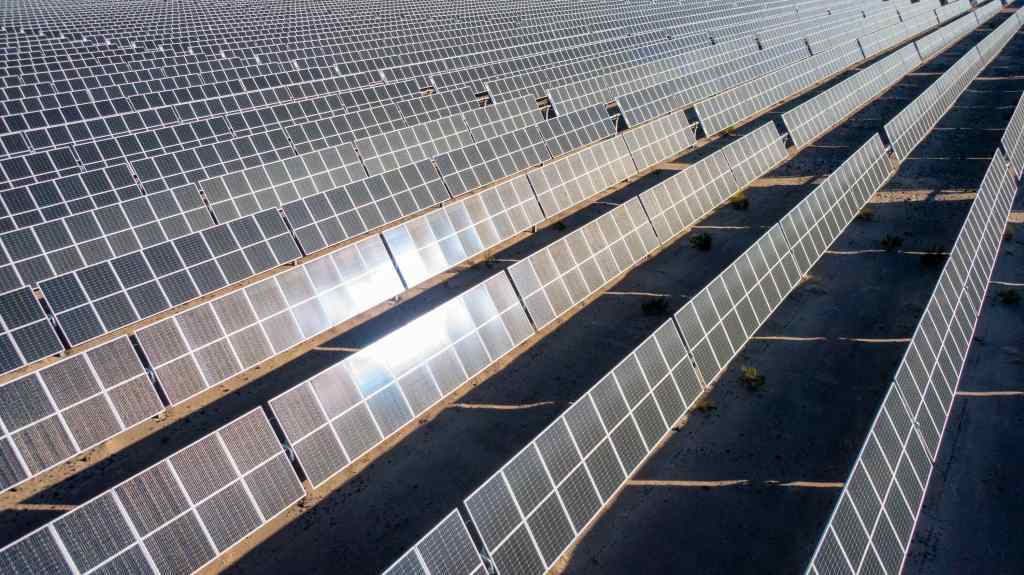Powering the AI Revolution: The Shift Towards Renewable Energy in Data Centers
The rapid expansion of artificial intelligence (AI) has led to an unprecedented surge in data center construction worldwide. According to a recent report by the International Energy Agency, global investments in data centers are projected to reach $580 billion this year, surpassing the $540 billion allocated for new oil exploration. This monumental shift underscores the growing dominance of digital infrastructure in the global economy.
However, this rapid growth brings with it significant energy demands. AI data centers are notorious for their substantial power consumption, raising concerns about their environmental impact and the strain they place on existing electrical grids. In response, many tech giants are turning to renewable energy sources to meet these demands sustainably.
Meta’s Commitment to Renewable Energy
Meta, formerly known as Facebook, has been at the forefront of integrating renewable energy into its data center operations. In January 2025, the company announced the acquisition of 200 megawatts of solar energy from Engie, adding to its impressive 12-gigawatt renewable energy portfolio. This move was followed by a series of substantial investments:
– May 2025: Meta secured an additional 650 megawatts of solar power through projects in Kansas and Texas, developed by AES.
– June 2025: The company further expanded its renewable energy assets by purchasing over 1 gigawatt of solar and wind power in Ohio, Arkansas, and Texas from Invenergy.
These strategic investments are designed to power Meta’s expanding data centers, which are essential for supporting its growing AI operations. Notably, in July 2025, CEO Mark Zuckerberg announced the construction of Hyperion, a 5-gigawatt AI data center in Louisiana, emphasizing the company’s commitment to sustainable growth.
Microsoft’s Renewable Energy Initiatives
Microsoft has also made significant strides in incorporating renewable energy into its data center operations. In March 2025, the company added 475 megawatts of solar power through agreements with AES for projects across Illinois, Michigan, and Missouri. This expansion reflects Microsoft’s proactive approach to meeting the escalating energy needs of its AI-driven data centers while adhering to its sustainability goals.
Innovative Approaches to Sustainable Energy
Beyond traditional solar and wind energy, companies are exploring innovative solutions to power their data centers sustainably:
– Geothermal Energy: A report by the Rhodium Group suggests that advanced geothermal power could supply nearly two-thirds of new data center demand by 2030. This approach involves harnessing the Earth’s internal heat to generate electricity, offering a reliable and sustainable energy source.
– Solar and Battery Integration: The Stargate joint venture, a collaboration between OpenAI, Oracle, and SoftBank Group, plans to utilize solar energy combined with battery storage to power its $100 billion AI venture. This strategy aims to ensure a consistent and sustainable power supply for their data centers.
– Eco-Friendly Data Centers: Swedish company EcoDataCenter has raised nearly $500 million to develop environmentally friendly data centers. Partnering with AI compute giant CoreWeave, EcoDataCenter focuses on building facilities that minimize environmental impact while meeting the high energy demands of AI applications.
Challenges and Future Outlook
Despite these advancements, the integration of renewable energy into data center operations is not without challenges. The International Energy Agency’s report highlights that half of the electricity demand from new data centers will originate from the U.S., with the remainder split between China and Europe. This concentration raises concerns about the capacity of existing electrical grids to handle the increased load.
Moreover, the proximity of data centers to urban areas with populations exceeding one million poses additional challenges related to grid connection and infrastructure development. The variability of renewable energy sources, such as solar and wind, necessitates the development of efficient energy storage solutions to ensure a stable power supply.
In response to these challenges, companies like Redwood Materials are developing microgrid solutions that repurpose old electric vehicle batteries to provide reliable power for AI data centers. Such innovations could alleviate pressure on the electrical grid and promote the adoption of renewable energy in data center operations.
Conclusion
The AI-driven data center boom presents both opportunities and challenges in the realm of energy consumption and sustainability. While the shift towards renewable energy sources is promising, it requires continued innovation, investment, and collaboration between tech companies, energy providers, and policymakers. By prioritizing sustainable practices, the tech industry can support the growth of AI applications without compromising environmental integrity.



